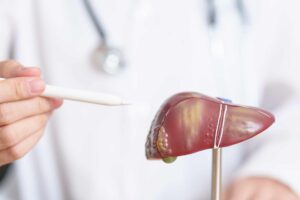Probiotics are defined as live microorganisms conferring health benefits to the host [1]. These bacteria mostly belong to lactic acid bacteria (LAB) of the Lactobacillus and Bifidobacterium genera [2]. Both topical and oral administration of Lactobacilli has been demonstrated effective in maintaining urogenital system health [3].
In particular, the effect of ingestion of fermented milk containing Lactobacilli in the prevention of vulvo-vaginal candidiasis, has been found long time ago [4]. Since then, several studies showed that oral intake of probiotic Lactobacilli leads to colonization of the vagina with the administered strains [5].
LAB are able to interfere with pathogenic microorganisms through several mechanisms of action: they produce antimicrobial substances such as hydrogen peroxide, lactic acid and bacteriocins; they compete for adhesion receptors and nutrients, and they co-aggregate with pathogens to reduce or replace their adhesion to epithelial cells [6, 7].
Lactobacillus plantarum P 17630 is a fully characterized probiotic strain with significant probiotic properties, including the ability to survive and persist in simulated gastro-intestinal conditions, adherence capacity to gastrointestinal cell lines and a good bile salt tolerance [8].
Together with other Lactobacilli strains, L. plantarum P 17630 is one of the commonly-isolated strain in vaginal fluid [9-11]. Indeed, L. plantarum P 17630 has shown ability to adhere to vaginal epithelial cells and to compete against pathogenic microorganisms. [20]
The antimicrobial activity of L. plantarum P 17630
The incidence of urinary tract infections (UTIs) has increased dramatically over the past 30 years. UTIs are mainly caused by microorganisms that inhabit the gastrointestinal tract, migrate and colonize the urinary tract [12]. Most UTIs are caused by Escherichia coli but other bacteria such as Proteus mirabilis and Klebsiella pneumoniae are also involved [13].
A very recent study investigated the antimicrobial activity of L. plantarum P 17630 against E. coli, P. mirabilis and K. pneumoniae. Using the spot agar test on E. coli and K. pneumoniae and the agar plug diffusion test on P. mirabilis, authors have shown that L. plantarum P 17630 strain has a strong inhibitory activity against various isolates E. coli strains and K. pneumoniae, as well as an intermediate inhibitory activity against P. mirabilis [8]. These findings suggest the potential use of L. plantarum P 17630 as an alternative to conventional treatments. Moreover, pathogenic microorganisms including E.coli, K. pneumoniae and P. mirabilis have shown to develop multidrug resistance [14, 15]. L. plantarum P 17630 is sensitive to the most commonly used antibiotics and can be considered safe, due to the absence of acquired antibiotic resistance [8]. Therefore, L. plantarum P 17630 probiotic could be used to treat urogenital tract and vaginal infections, without the risk of antibiotic resistance development.
L. plantarum P 17630 and vaginal infections
Vaginal microbiota is mainly composed by Lactobacilli strains, which are important for the maintenance of microflora normal condition [17]. Depletion of Lactobacilli is frequently associated with vaginal infections, which are caused by bacterial vaginosis, aerobic vaginitis trichomoniasis, or vulvovaginal candidiasis [18].
Reduction of Lactobacilli has been found in women with bacterial vaginosis and aerobic vaginitis [19]. Therefore, several studies have tested vaginal and oral use of probiotic Lactobacillus strains for the treatment and prevention of vaginal infections.
Since the first evidence on the ability of L. plantarum P 17630 to adhere to human vaginal cells [20], several clinical studies have been conducted to test the efficacy of this strain in maintaining vaginal health and restoring it following infections.
Two pilot studies lead by Nava and colleagues, investigated the efficacy and safety of L. plantarum P 17630 in the treatment of infective-inflammatory vaginal disease [21].
In the first study, vaginal capsules of L. plantarum P 17630 were administered to 30 women with bacterial or mitotic vulvovaginitis every day for 6 days, without any prior specific therapy. The treatment was successful in 93.4% of the cases, showing a significant reduction of symptoms (vaginal hitching, burning, and leucorrhea) after 6 days (p<0.01), together with a constant reduction of vaginal pH.
In the second study, 30 women with recurrent vulvovaginitis caused by C. albicans were treated with L. plantarum P 17630 vaginal capsule for 6 days per month for a total of 3 months. A significant reduction in the incidence of recurrent infections was observed after 3 months of treatment (p=0.02), as well as reduction in hitching, edema, leucorrhea and vaginal pH (p<0.01). Interestingly, the effect was maintained even after therapy suspension for 3 months.
Together, these studies demonstrate a quick and durable effect of L. plantarum P 17630 in restoring the physiological vaginal microenvironment following infections or inflammation, thus representing an efficient therapeutic approach, especially after antibiotics or antimycotic treatment.
Few years later, Carriero and colleagues demonstrated clinical efficacy of L. plantarum P 17630 in the treatment of vaginal infections with Candida albicans [22]. They conducted a large study on women with vulvovaginal candidiasis, with a pre-intake of anti-fungal compounds and found a significant vaginal pH normalization, reduction of symptoms and relapses, as well as maintenance after four months of treatment [22].
In the retrospective clinical trial by De Seta and colleagues [23], patients affected by vulvovaginal candidiasis underwent vaginal application of a capsule containing L. plantarum P 17630 (>108 CFU) once a day for 6 days and then once a week for other 4 weeks, together with conventional therapy.
Following L. plantarum P 17630 treatment, a statistically significant increase in Lactobacillus values (80% versus 40%, p < 0.001) was observed, as well as an improvement of symptoms in terms of absence of vaginal burning or itching (90% in people with L. plantarum versus 67.5% in control group).
Vaginal swabs among L. plantarum P 17630 treated women after 3 months of follow-up showed a significant increase in vaginal Lactobacilli count (p < 0.01), a more stable restoration of physiologic pH value (p < 0.01) and a significant subjective improvement of burning or itching (p < 0.03) [23].
Furthermore, an observational, prospective, multicenter study by Cianci and colleagues, evaluated the efficacy of L. plantarum P 17630 in the treatment of bacterial vaginosis and aerobic vaginitis [19]. Women with infections were treated with one vaginal capsule for 6 consecutive days, then a capsule per week, together with standard treatment for the conditions.
Clinical resolution of symptoms was reported in the 83% of the cases, demonstrating that L. plantarum, given in association with specific treatment, may improve clinical resolution in women with bacterial vaginosis and aerobic vaginitis.
The same research group investigated the efficacy of L. plantarum P 17630 in the prevention of recurrent vaginal or urological infections or as a preventive strategy during systemic antibiotic treatments [24].
Women with bacterial vaginosis, history of recurrent vaginal infections, cystitis and/or undergoing antibiotics treatment for respiratory tract infection were prescribed L. plantarum P 17630 >100.000.000 UFC one vaginal capsule per day for 6 days, then a capsule per week for 16 weeks. After 4 months of follow-up, a decreased risk of recurrent infection was observed in treated women compared to the untreated control group [OR 2.6 (95%CI 0.7-9.4)].
Although data are not significant, this study suggests that treatment with L. plantarum-based probiotics may reduce the frequency of infection in women with recurrent vaginal or genitourinary infection after standard treatment for these conditions, or after antibiotics treatment for respiratory infection, a condition commonly associated with an increased risk of vaginal infection.
Efficacy of L. plantarum P 17630 oral administration
First evidence of Lactobacilli persistence in the vagina after oral intake was reported by Reid and colleagues [25], who demonstrated that Lactobacilli were able to restore and maintain a normal vaginal microflora [26]. Same authors found that an oral dose of over 1 billion organisms per day was able to maintain a lactobacilli-dominated vaginal presence [27].
Few years later, Montella and colleagues investigated the presence of L. plantarum P 17630 in the vaginal microflora after food supplement oral administration in six healthy volunteers [28]. Subjects were treated for 60 consecutive days with a commercialised product containing a total of 50×109 CFU of L. plantarum P 17630.
Presence L. plantarum P 17630 was genetically revealed in the vaginal mucosa of 80% of treated subjects after 30 days and even after 15 days of wash-out period. These findings confirmed that L. plantarum P 17630, administered orally, is able to pass through the gastrointestinal tract, reach, colonize, and persist in the vaginal epithelium, helping to increase the total amount of Lactobacilli [28].
In a more recent study, administration of oral capsules of L. plantarum was evaluated in 93 women with a history of recurrent vulvo-vaginal candidiasis (VVC) over a period of 3 treatment cycles each consisting of 15 days intake and 15 days washout, for a total of 90 days [16]. After the first treatment cycle, there was a significant increase of Lactobacilli in the vaginal epithelium of treated woman compared to women receiving placebo, and the bacteria persisted after 90 days.
Moreover, oral treatment with L. plantarum P 17630 significantly improved redness, swelling and symptoms related to VVC after 45 days and these effects were maintained after 90 days [16].
Conclusions
Numerous studies support the beneficial role of L. plantarum P 17630 in maintaining a proper vaginal balance and reducing vaginal infections. Evidence is now mounting on the ability of L. plantarum P 17630 to survive in the gastrointestinal tract and reach the vagina by cross-contamination maintaining its probiotic activity.
Moreover, thanks to the capacity of L. plantarum P 17630 to adhere to vaginal epithelial cells, inhibiting pathogens overgrowth and increasing the presence of Lactobacilli, its oral administration can be effective in preventing vaginal infections. Due to the growing interest for the use of Lactobacilli of human origin as probiotics, L. plantarum P 17630 might represent a good alternative or an adjunctive therapy in food supplements for the treatment and prevention of relapses of vaginal and UTI infections.
References
10. Giorgi, A., et al., Identification of vaginal lactobacilli from asymptomatic women. Microbiologica, 1987. 10(4): p. 377-84.
11. Reid, G., Probiotics: how microorganisms compete. JAMA, 1996. 276(1): p. 29-30.
18. Workowski, K.A., S. Berman, and C.f.D.C.a.P. (CDC), Sexually transmitted diseases treatment guidelines, 2010. MMWR Recomm Rep, 2010. 59(RR-12): p. 1-110.
20. Culici M, D.S.M., Braga P C, The adhesion of lactobacillus plantarum P 17630 to vaginal cells inhibits the adhesion of candida albicans. . 2004: Italian journal of medical microbiology and clinical dentistry. p. 34-41.
21. Nava S, G.G., Colombo D e Mongelli L, Considerazioni sull’impiego del Lactobacillus plantarum P17630 nella patologia vaginale su base infettivo-infiammatoria. RIVISTA DI OSTETRICIA GINECOLOGIA PRATICA E MEDICINA PERINATALE.
22. Carriero C, L.V., Mancini T, Selvaggi L., Vaginal capsules of lactobacillus plantarum P 17630 for prevention of relapse of candida vulvovaginitis: an Italian multicentre observational study. 2007: International Journal of Probiotic and Prebiotic p. 155-162.












